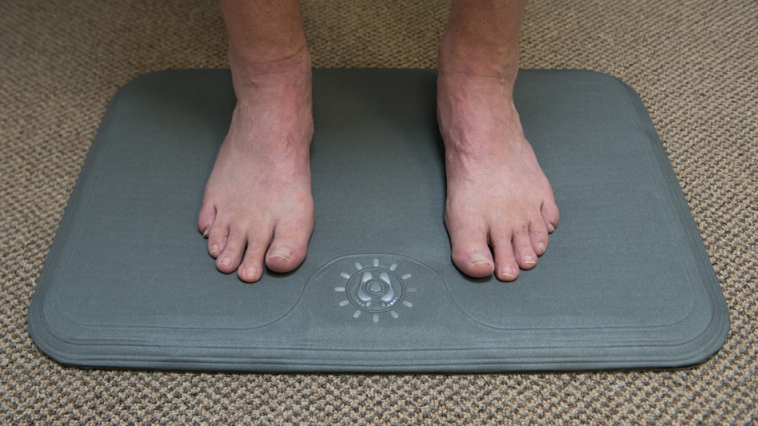Foot ulcers are a huge problem worldwide. To try and combat some of the problems related to foot ulcers Jon Bloom has launched a startup called Podimetrics. In doing so, the company has developed a smart mat that can detect early warning signs of foot ulcers, with the potential to drastically cut down the number of amputations all while bringing down medical costs. Co-founder of the company is Brian Peterson, who is also the chief data scientist.

The smart mat idea was actually conceived at an MIT Hacking Medicine hackathon. It consists of a mat that’s fitted with various sensors that detect spikes in temperature around the foot, hinting to the early formation of an ulcer. In order to get a diagnosis, the patient stands on the mat for approximately 20 seconds a day while the measurements are sent to and stored in the cloud. If the mat detects an ulcer, an alert is sent to the patient’s physician to begin devising a treatment plan. Currently, more than 500 homes have chosen to have the mat in their home.
According to a recent paper published in Diabetes Care, the mat diagnosed ulcers around five weeks before they were detected at the doctor’s office. “That’s an enormous jump in time, where patients and physicians can put a plan in place with the goal of preventing the foot ulcer from occurring,” says Bloom.
Once a foot ulcer is present, they’re very easy to get infected. Statistics issued by the Mayo Clinic state that foot ulcers are the cause of more than 80 percent of all diabetic amputations. Surprisingly or not, they’re actually really expensive to treat too. Estimated medical costs relating to a foot ulcer are said to be around $15,000 to $20,000 per year on average per patient. Adding all that up comes to between $9 billion and $13 billion per year which is added to the cost of diabetes.
A previous study carried out in 2007 by the National Institutes of Health used infrared temperature monitoring to alert them to early signs of foot ulcers. Those patients that managed to stay off their feet when their temperature spiked by about 2.2 degrees Celsius had a 70 percent better chance of not developing a foot ulcer. Podimetrics uses that same method and has programmed its mat to monitor the temperature of the whole foot and detect and areas that are 2.2 degrees Celsius hotter than the rest of the foot. When an alert is made, the physician will call the patient and tell them to put their feet up until the temperature had cooled, or arrange an appointment.
“[Physicians and patients] don’t find [ulcers] until after the fact, and then they’re going down the wound-care path,” says Bloom. “We’re saying let’s identify them before they’re open, so we can do simple, brief preventative interventions.” One of the main problems many diagnostic technologies face is with the rate of false positives they receive. But so far, that’s not been a problem for Podimetrics. The mat can be adjusted to accommodate for higher or lower temperature thresholds, but bear in mind that a lower threshold means greater sensitivity and more potential for false positives.
It was 2011 when the team won second place at MIT’s first Hacking Medicine hackathon and began their journey. “I can’t imagine Podimetrics without the MIT environment,” says Bloom. “It was such an unbelievable place to be.” In 2012, Podimetrics joined a major digital-health startup accelerator, Rock Health, and the Beehive incubator. An early prototype model of the mat was produced in the incubator. Then, the team moved to Somerville, Massachusetts, where their product became fine tuned. The company has already received more than $8 million in funding over the past five years and is now on the verge of scaling up its operations to try and get into even more homes. Have you got yours yet?
Research Article via MIT
More News to Read
- Meet the Engineer Who 3D Prints Revolutionary Human-Robotic Arms
- Meteor Shower From Dead Comet Sighted Again
- Will Tesla 3 Pre-orders See the Light of Day and Will This Car Create…
- Future NASA Study Will Focus on the Ocean Worlds of the Milky Way
- Quantum Computer Programming: What You Need to Learn to Get Started?











